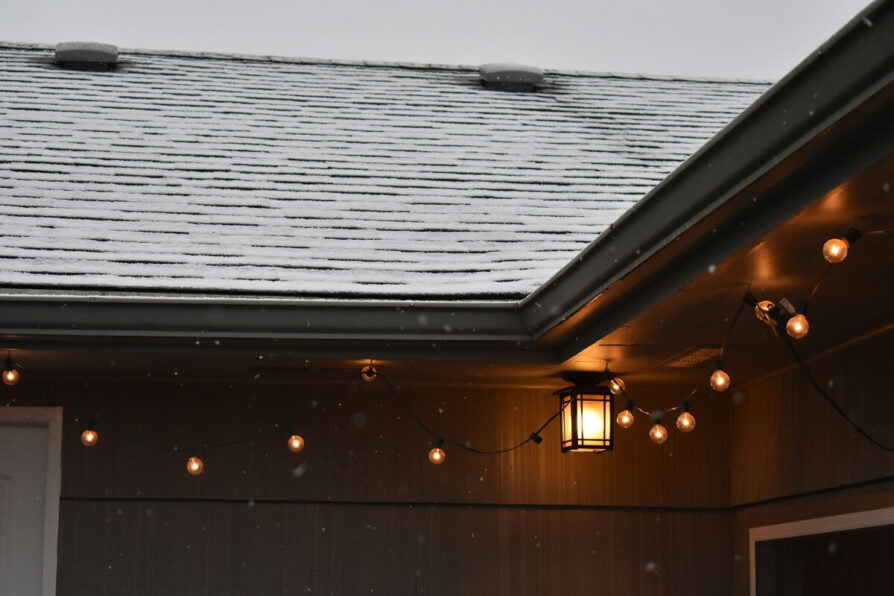Roofing contractors operating in regions susceptible to hailstorms face unique challenges. Hail can wreak havoc on roofs, leading to significant damage and costly repairs. To succeed in such environments, roofers must employ strategies tailored to mitigate damage, enhance durability, and ensure customer satisfaction. Consider these key strategies for roofing contractors operating in hail-prone areas.
High-Quality Materials
The foundation of any resilient roof lies in the materials used. Roof contractors have learned that opting for high-quality materials engineered to withstand impact in hail-prone regions is crucial. Impact-resistant shingles, such as those fortified with polymer modifiers or fiberglass, can significantly reduce the risk of damage during hailstorms. Additionally, metal roofing, known for its durability, offers superior protection against hail compared to traditional asphalt shingles.
Thorough Inspections
Performing a comprehensive roof inspection is a crucial aspect of the strategies employed by roofers. Contractors typically start by visually inspecting the roof from ground level, assessing its general condition and identifying any visible signs of damage such as missing or damaged shingles, sagging areas, or debris accumulation. Following this initial assessment, contractors may utilize ladders or access points to inspect the roof up close, examining critical areas such as flashing, vents, and chimneys for signs of hail damage or deterioration.
Similarly, roof contractors often conduct a thorough inspection of the attic space beneath the roof to identify issues that may not be visible from the exterior. This includes checking for signs of water damage and assessing the condition of insulation and ventilation systems. By examining both the interior and exterior of the roof, contractors can provide homeowners with a comprehensive assessment of its condition and recommend any necessary repairs or maintenance to ensure its continued functionality and protection.
Professional Installation Techniques
Even the highest-quality materials can fail if not installed correctly. Ensure your team is well-versed in proper installation techniques, adhering to manufacturer guidelines and industry best practices. Pay particular attention to the fastening process, as improperly secured roofing materials are more susceptible to hail damage. Investing time and resources in training your workforce can significantly enhance the resilience of installed roofs.
Impact-Resistant Roofing Options
Impact-resistant roofing options have become increasingly popular among homeowners in hail-prone regions. One prevalent choice is impact-resistant shingles, which are designed to withstand hail, debris, and high winds better than traditional asphalt shingles. These shingles often feature reinforced materials such as fiberglass or polymers, making them more resilient to impact damage. Additionally, impact-resistant shingles are typically tested to meet specific standards set by organizations like the Underwriters Laboratories (UL) or the American Society for Testing and Materials (ASTM), ensuring their reliability in harsh environments.
Metal roofing is another notable option known for its exceptional durability and resistance to impact. Metal roofs can endure hailstorms without sustaining significant damage, making them an attractive choice for regions prone to severe weather. With proper installation and maintenance, metal roofs can last for decades while providing reliable protection against impacts and other environmental factors. Furthermore, metal roofing comes in various styles and finishes, allowing homeowners to achieve both aesthetic appeal and robust performance. As climate change leads to more frequent and intense weather events, the demand for impact-resistant roofing options is likely to drive innovation in materials and technologies.
Strengthen Roofing Systems
Roof contractors employ various strategies to fortify roofing systems, ensuring longevity and resilience against harsh weather conditions. One fundamental approach involves utilizing high-quality materials, such as impact-resistant shingles or tiles made from durable substances like metal or slate. By selecting materials engineered to withstand wind, hail, and other environmental stressors, contractors bolster the structural integrity of the roof. Additionally, they may apply waterproof membranes or underlayment to enhance protection against water infiltration, a common cause of roof damage. These layers act as barriers, preventing moisture from seeping into the underlying structure and causing rot or mold growth.
Contractors often reinforce roofing systems through proper installation techniques. This includes meticulous attention to detail during the placement of shingles, tiles, or other roofing elements to ensure they are securely fastened and properly aligned. Adequate ventilation and insulation are also critical components of a fortified roof, as they help regulate temperature and moisture levels, reducing the risk of heat damage or ice dams. Regular maintenance and inspections allow contractors to identify and address potential issues before they escalate. By employing a combination of quality materials, skilled installation practices, and ongoing maintenance, roof contractors can strengthen roofing systems to endure the test of time and weather.
Maintenance Education
Effective maintenance is vital for preserving the integrity of roofs in hail-prone areas. Educate homeowners on proper maintenance practices, such as clearing debris, inspecting for signs of damage, and promptly addressing issues to prevent further deterioration. Encourage proactive measures, such as scheduling regular inspections and conducting post-hailstorm assessments to assess potential damage.
Insurance Partnerships
Forge strategic partnerships with insurance companies to offer comprehensive roofing solutions to homeowners. Collaborate with insurers to promote impact-resistant roofing options and incentivize policyholders to invest in resilient roofing materials through premium discounts or coverage benefits. Positioning your company as a preferred contractor for insurance-recommended upgrades can enhance credibility and drive business growth.
Exceptional Customer Service
Deliver unparalleled customer service to differentiate your business in the competitive roofing industry. Prioritize responsiveness and transparency, promptly addressing customer inquiries and concerns. Establish clear communication channels and provide regular updates throughout the roofing process, fostering trust and loyalty. Strive to exceed customer expectations by delivering quality workmanship and ensuring satisfaction with the final results.
Stay Informed and Adapt
Remain vigilant and adaptable in the face of evolving challenges posed by hailstorms. Stay informed about advancements in roofing technologies, building codes, and industry trends to continuously improve your services. Adapt your strategies and offerings based on lessons learned from past experiences and feedback from customers and industry peers. By staying proactive and adaptable, roofing contractors can navigate hail-prone areas successfully.
Building a great reputation as a roofing contractor in hail-prone areas requires a combination of expertise, diligence, and innovation. Through continuous learning and adaptation, roofing contractors can effectively mitigate the impact of hailstorms and build a reputation for reliability and excellence in their communities.
Peak Roofing & Exteriors
If you’re looking for an honest and experienced roofing contractor that can handle your home or business roofing needs in Northwest Arkansas, Northern Louisiana, or West Texas, look no further. Peak Roofing & Exteriors will deliver with quality and integrity. Contact us today and book your FREE inspection!

